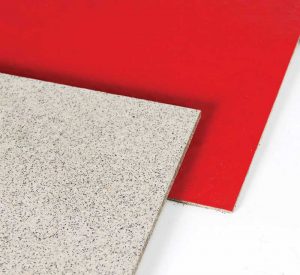
The only way to use such dumb intumescent materials successfully is to totally encase them in a fire-resistant canister or box, so the expansion can only occur in the direction required, and all other directions are sealed. A typical example of their use would be in fire collars, where the intumescent is contained within a steel shell around the pipe to direct the expansion inwards.
Another disadvantage of rubber-based intumescent is the high organic content, which means it creates a great deal of smoke in a fire situation—which can be dangerous for both occupants and firefighters alike.
Dumb intumescent materials are generally produced in high volume, with no particular design application in mind. These materials are then supplied to “convertors” who incorporate them into products, which must be encased, to make them work in the manner required.
Dumb materials do have the advantage of being widely available as they are sold as a general-purpose intumescent material. While these materials seldom perform to the same level as a specifically designed “smart solution,” they can be used when no “smart solution” is available to give an acceptable level of performance.
Smart intumescent materials
Smart intumescent materials are very different because of the way they work. The materials are generally produced for a specific end application from the start of the production process. Smart intumescent materials can be fine-tuned to provide expansion in only the direction required for the application, and they can even be formed into the finished product shape.
Unlike other types of intumescent materials, smart ones do not use rubber as the basic matrix. Instead, they use mineral fibers, which are layered along with intumescent particles in the forming process to produce a multi-layered product. This structure allows accurate control of both the rate and direction of expansion.





While I agree that there are a variety of intumescent materials, I was sharply disappointed that there is no mention of firestop SYSTEMS in the article. Given the widespread lack of understanding about firestopping in the AEC industry, it is too easy for someone to read this article and think, “Oh, I need to get some “smart” intumescent material for my project.” without recognizing that the IBC requires firestop systems (2021 sections 714.4.1.2 for penetrations and 715.3 for joints). The materials, intumescent or not, must be installed in strict conformance to a UL Certified firestop system or an Engineering Judgment from a firestop manufacturer. No matter what materials are used, it is not just up to the installers to decide what material(s) to use and how to install them. Unless the firestop materials are installed in conformance to an approved firestop system, there is no confidence that openings and joints will be properly protected and will provide their part in the compartmentation needed in a structure fire.